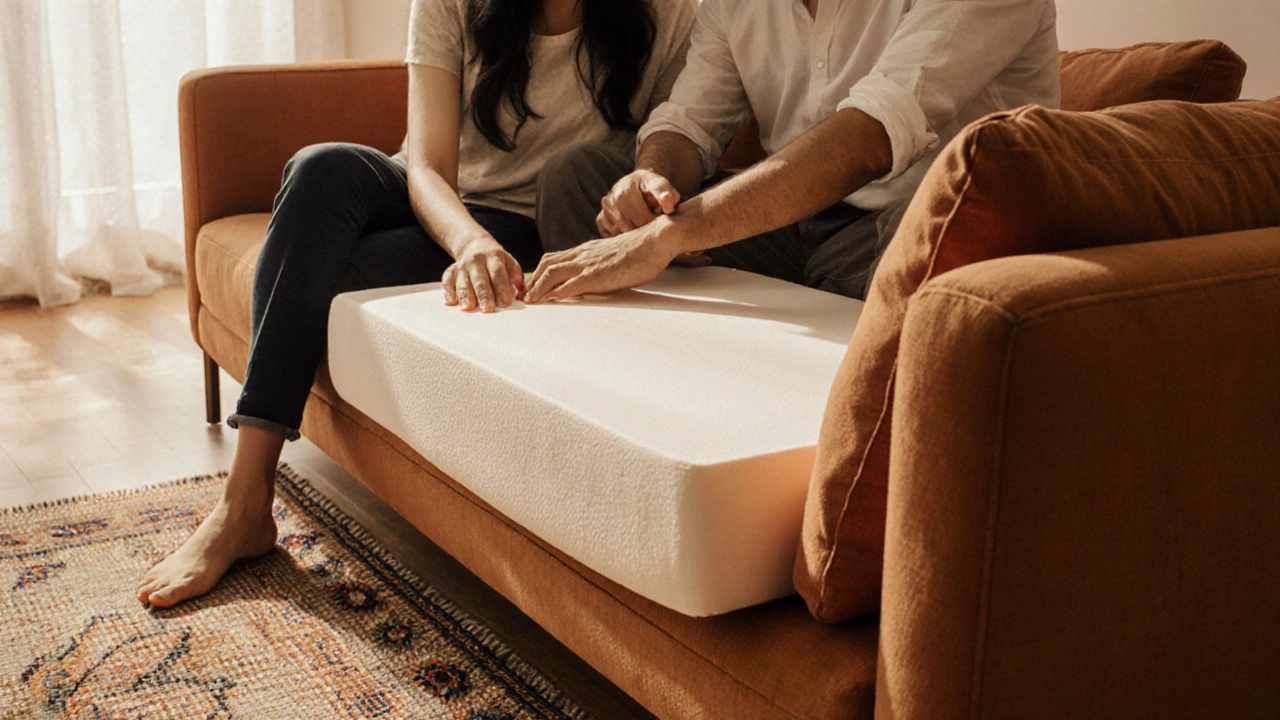Sofa Cushion Filling: How to Choose the Right Stuff
When you sit on a sofa, the filling is what makes it feel firm or plush. Picking the right cushion material can turn an ordinary piece of furniture into a favorite spot for binge‑watching or relaxing after work. Below we break down the most common fillings, what they’re good for, and how to match them with your lifestyle.
Common Types of Sofa Cushion Filling
Polyurethane foam – This is the workhorse of the industry. It comes in different densities, so you can get a firm seat for a modern look or a softer feel for a cozy vibe. High‑density foam holds its shape longer, which means fewer lumps over time.
Feather and down – If you love sinking into a cloud, feather or down stuffing is the answer. It’s lightweight and molds to your body, but it needs a protective cover to stop the feathers from poking out. Expect to fluff the cushions now and then to keep them even.
Polyester fiberfill – Also called “batting,” polyester is inexpensive and hypoallergenic. It’s a good middle ground if you want some bounce without the cost of real feathers. The downside is it can compress faster than foam.
Eco‑friendly options – Recycled polyester, bamboo fiber, or soy‑based foam are gaining traction. They offer similar performance to traditional materials while reducing waste. Look for certifications that prove the claim, like Global Recycled Standard.
How to Pick the Right Filling for Your Sofa
1. Consider use frequency. A family room that sees daily use benefits from high‑density foam that won’t sag. A guest sofa that’s only used occasionally can get away with softer feather or polyester.
2. Think about climate. In hot regions, foam stays cooler than feather, which can retain heat. In colder areas, feather can add a touch of warmth.
3. Check maintenance needs. Foam cushions are low‑maintenance – just rotate them occasionally. Feather cushions need regular fluffing and may require a removable cover for cleaning.
4. Match your style. A sleek modern sofa often pairs with firm foam for a crisp silhouette. A classic, over‑stuffed couch looks better with a mix of foam core and feather top layers.
5. Budget matters. Foam is generally cheaper per pound than real down. If you’re on a tight budget, go for a foam‑feather blend – it gives you some of the plush feel without the high price.
When you shop, don’t just look at the label. Ask the retailer about the density (measured in kg/m³) for foam and the fill power for down. Higher numbers usually mean longer life and better comfort.
For a quick fix, you can add a duvet‑style insert to an existing cushion. This is a cheap way to change the feel without re‑upholstering the whole sofa.
In short, the best filling depends on how you use the sofa, your climate, and how much you’re willing to spend on upkeep. Mix and match if you’re not sure – a firm foam core with a feather top gives a balanced feel and keeps the cushion from flattening too quickly.
Ready to upgrade your sofa? Start by checking the current cushions for signs of wear – any permanent indentations, lumps, or loss of bounce? If you spot any of those, it’s time to replace the filling or swap the whole cushion. A fresh fill can revive an old sofa and make it feel brand new.
The Best Filling for Sofa Seat Cushions: Comfort, Durability & Style
Discover the top sofa seat cushion fillings, compare foam, down, latex and hybrid options, and learn how to pick the perfect material for lasting comfort and style.
View More




